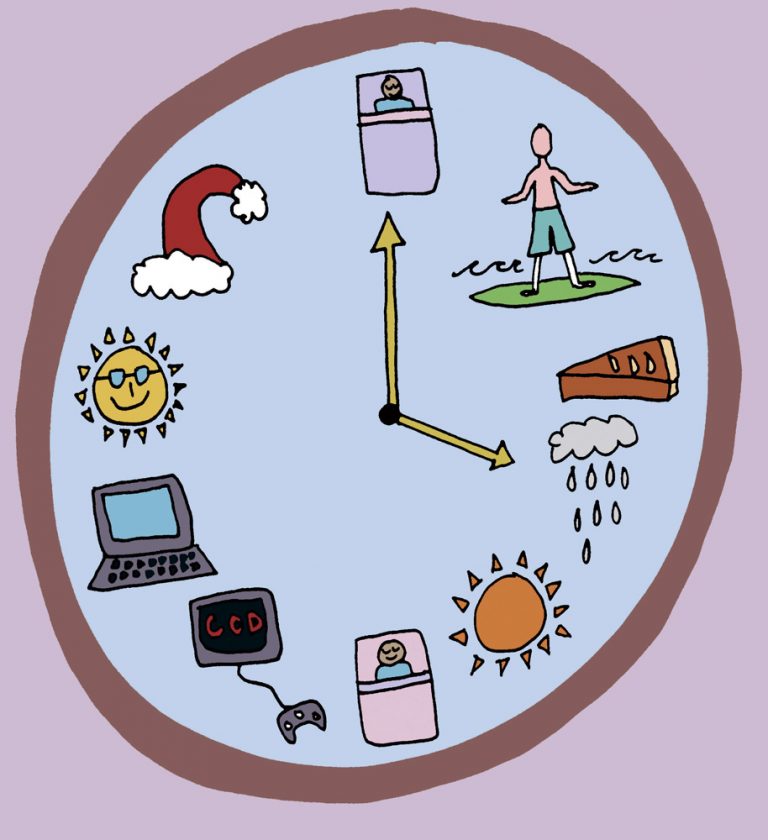
Spencer Wu
Staff Writer
After the conclusion of fall quarter, students packed their bags for winter break, a four week long hiatus from the University of California, Santa Barbara.
The perks of this break include seeing family members during the holiday season, reconnecting with friends and leisurely activities, and most of all, enjoying a collective month-long, slate-cleaning intermission before the commencement of winter quarter. Given these overwhelming pros, there still are counterintuitive negatives, namely, it being too long.
In the previous academic year, the UC schools employing the quarter system only had a three-week-long break. The reallocation of break time seems odd, as administration tacked on another week onto winter break, rather than spring break, which only lasts one week. This change, although initially met with reverence from students, is shaking out to be not what people imagined because students are not too sure how to use their time.
Unless students have a job or internship program to return to for four weeks, which is quite rare, they will be spending most of their break mulling over fall quarter’s missteps or contemplating New Year’s resolutions for the new calendar year and impending quarter. In essence, most people will have trouble searching for what to do during this time frame — it’s too short to be deeply involved in a new endeavor and too long to be a mind-numbing break from school related activity. The time period is metaphorically in a suspended state of purgatory.
It seems as though the best way to spend this break is by traveling to a new place. The four-week gap provides ample time to get ready for a trip, experience and absorb the wonders of it, and return home, all with enough time to do the everyday tasks like catching up with friends and resuming childhood pastimes.
However, as is the case with a lot of people, students do not always have the resources or management to embark on said vacation. These trips could be too expensive, difficult to schedule, and problematic due to logistical issues.
Personally, I would like to have this additional week placed on the tail end of spring break so the gaps between quarters are more closely aligned. That way, the intermissions between quarters are more balanced, making for a more uniform academic year. Having lopsided break durations make the quarter seem more daunting, as there is only a one week hiatus before spring quarter. Another alternative, however unfeasible, would be to apply these vacation days as “dead days” before finals so students could get that experience and added preparation before examinations roll around.
Although students normally associate breaks or vacations with happiness and relaxation, there are lots of underlying layers that go much deeper than that. This extra week pushes the biggest break of them all, summer break, back a week and could be contentiously argued as poor placement and management.
The extra week off could see students unsure of how to spend their vacation days, when the additional days of rest could be allocated elsewhere to ease the pressure of finals week or to extend an underwhelmingly shorter break. With all these options and alternatives, it is puzzling to see why the administration chose to incorporate it into the already three-week-long break.











nice..
Comments are closed.